Wells is a small city in Somerset, England, not far from where I live in Bath. The construction of Wells Cathedral began in 1175 and was largely completed by the mid-13th century making it one of the earliest Gothic cathedrals in England.
In this article, I take you through the highlights based on my visit in May 2024.

The cathedral’s west front is adorned with nearly 300 statues of saints, kings, angels, and biblical characters. Many are weathered and eroded, with some being replaced by new carvings. Originally, many of the statues and the west front itself were painted in vibrant colours, though much of the paint has worn away over the centuries.

When we visited in May 2024, the nave was filled with Peace Doves, a mass participation artwork by sculptor and artist Peter Walker.
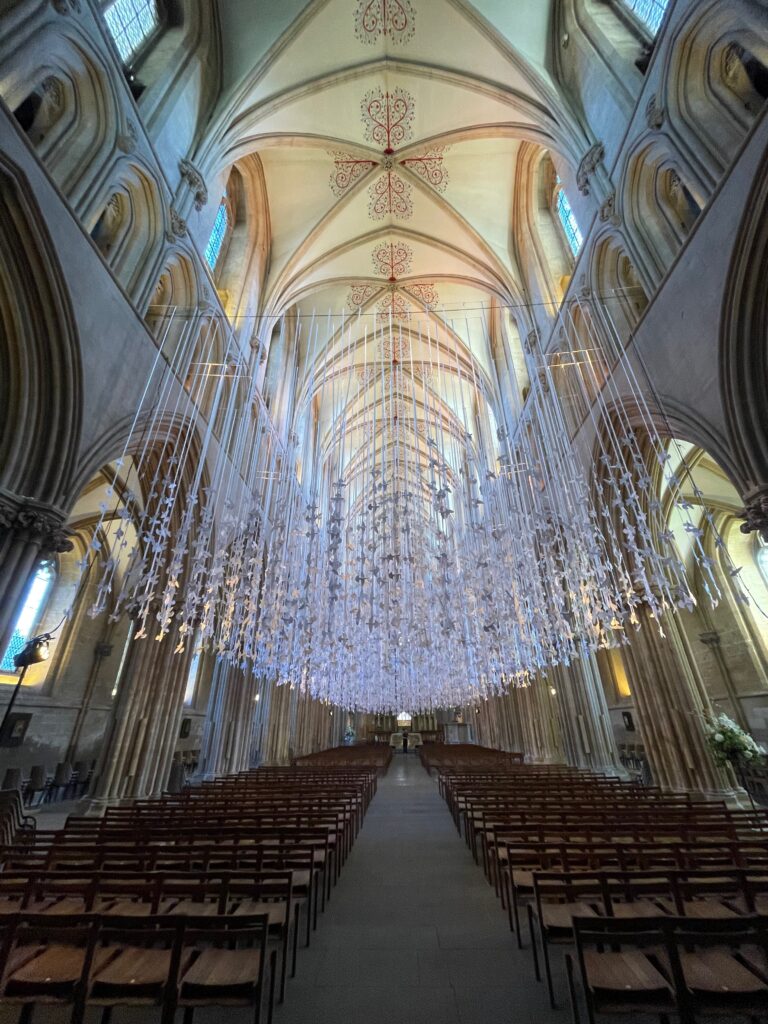
I always like to look up when in cathedrals. This is the nave ceiling nearest the altar.
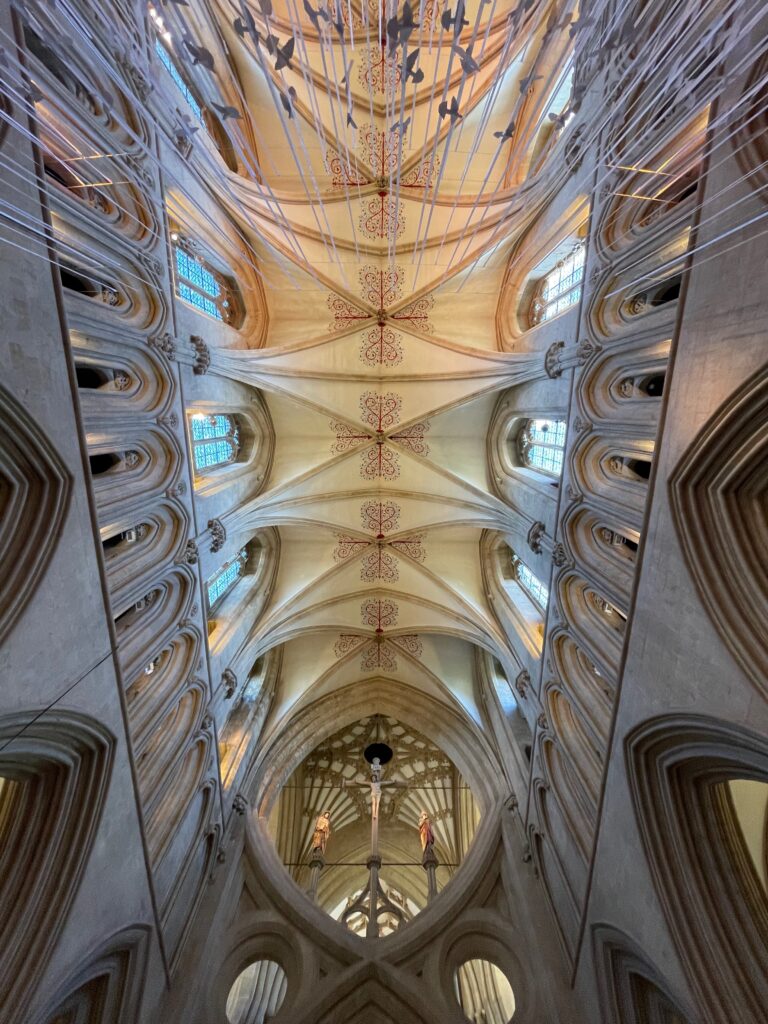
Wells Cathedral is famous for its scissor arches, which support the central tower, but also provide a softness to the architecture that is missing in so many Gothic cathedrals. This design distributes the weight of the tower more evenly across the foundations and into the ground, effectively counteracting the forces that were causing the tower to sink and tilt. It’s amazing to consider that these were constructed in the mid-14th century.
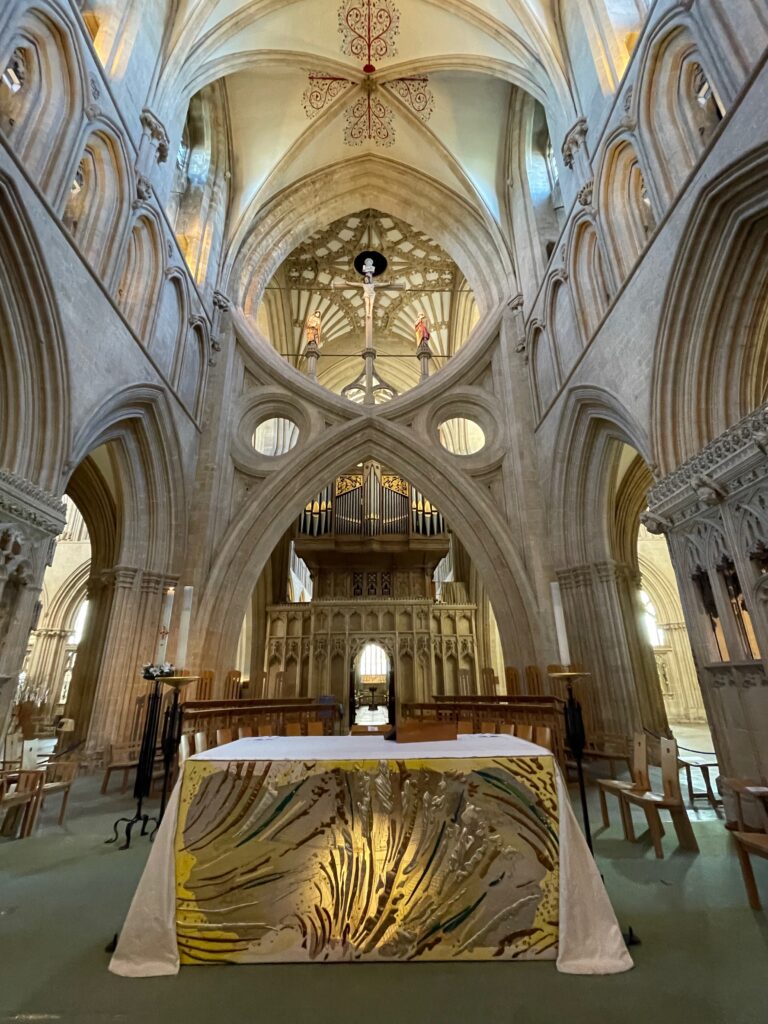
While there are scissor arches in other cathedrals, at Wells, they are a central feature. They make up three sides of the crossing.
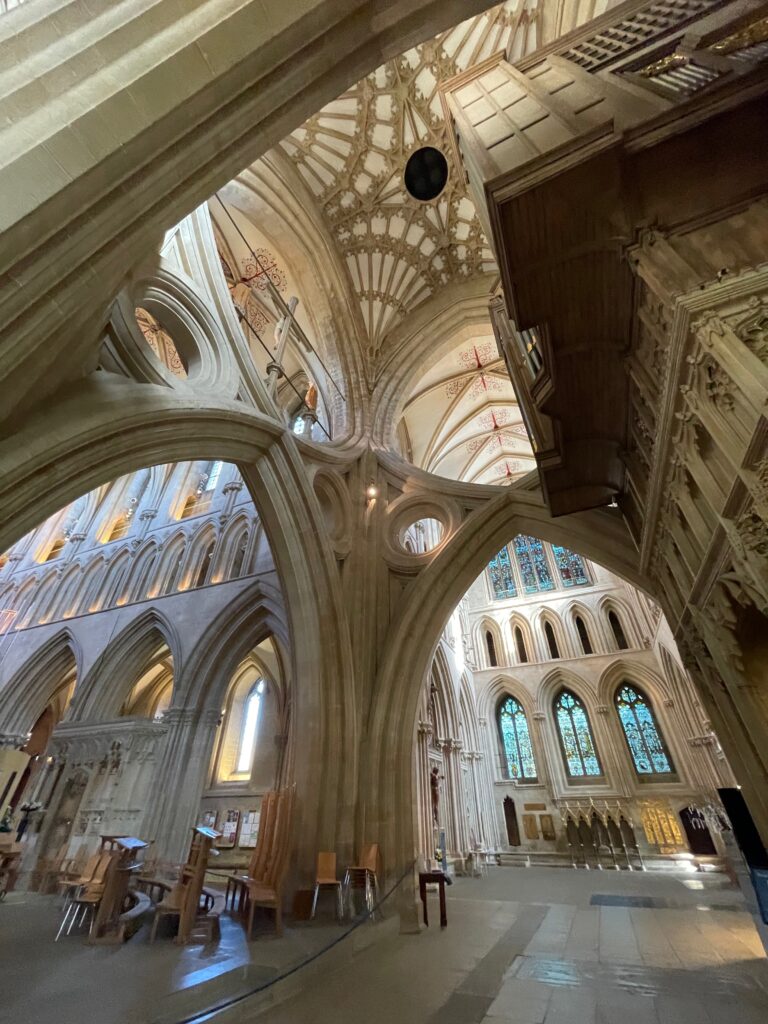
I also loved the way the church community has integrated high backed chairs seem in the picture below. I think they give almost a Tolkien elvish vibe to the nave. The Peace Doves hang down in the nave.
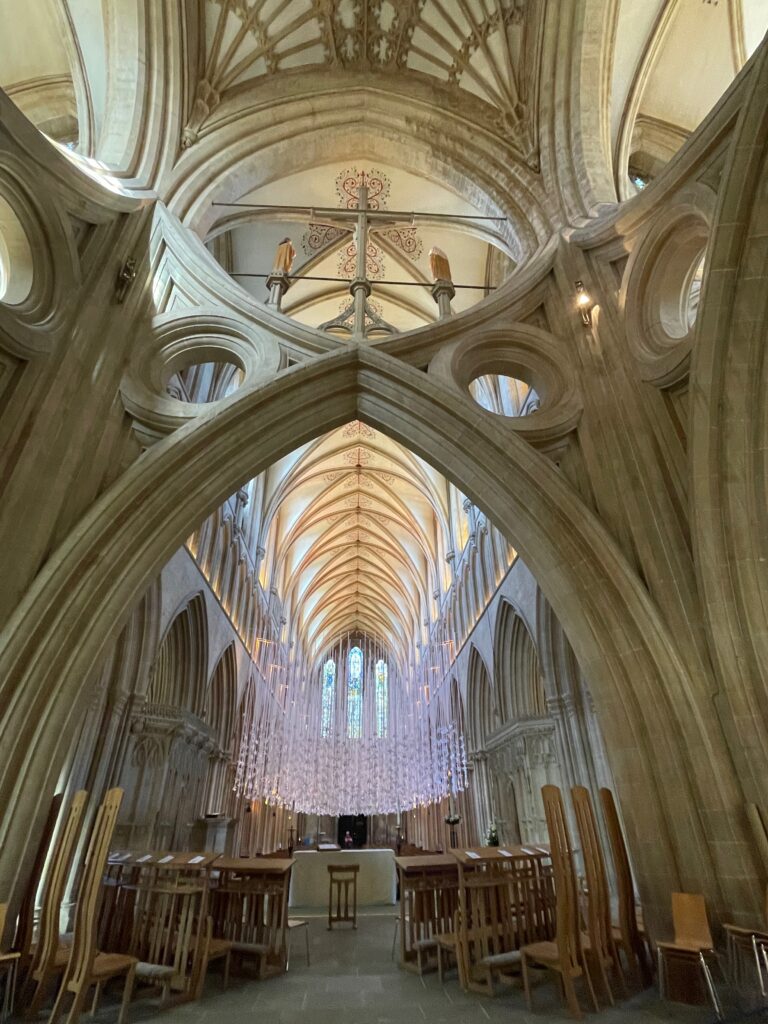
Wells Cathedral is primarily constructed from Doulting stone, a type of fine-grained oolitic limestone sourced from nearby quarries in Doulting, Somerset. This limestone has been favored for its durability and workability, and it also has a warm, pale, honey-colored hue, which gives the Cathedral its soft and inviting appearance. The stone’s softness also allows for detailed craftsmanship, adding to the overall beauty and historical value of the cathedral.
I take a lot of photos on my book research trips, but I am often alone. On this trip, my husband, Jonathan came too and caught me mid-photo!

Wells Cathedral houses one of the oldest working mechanical clocks in the world, dating back to the 14th century. Its face depicts a medieval universe with a 24-hour clock and moving jousting knights. It ‘performs’ every 15 minutes so make sure you see the little jousting match!
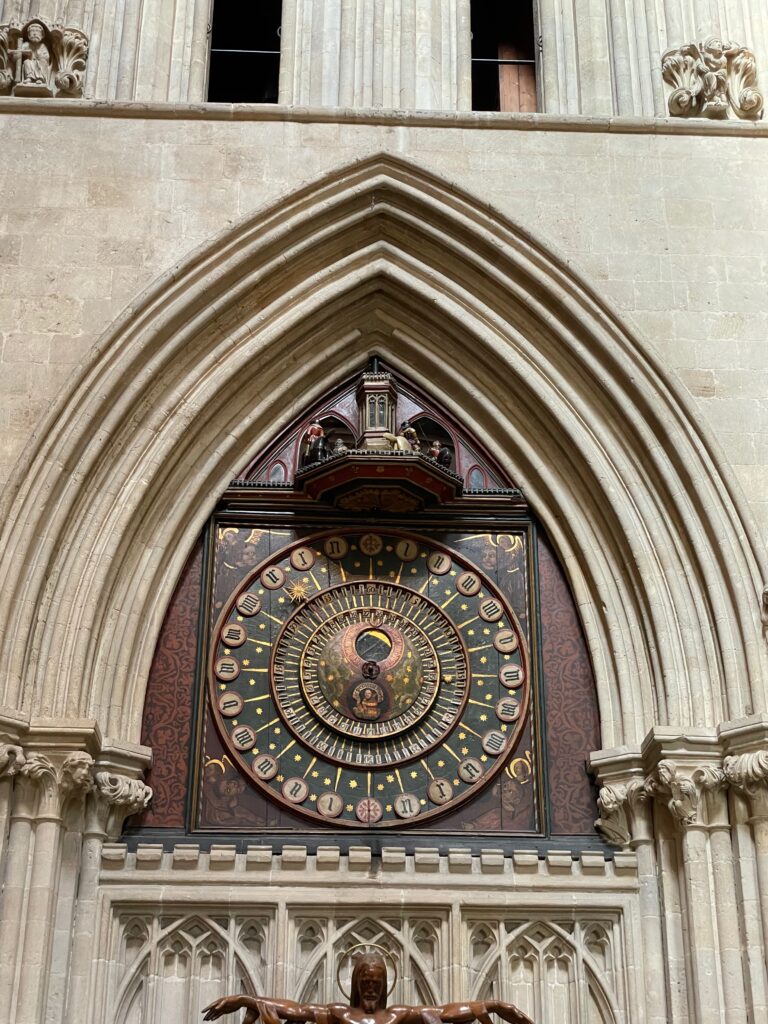
The choir area is separated from the Nave.

I love the pointed arches behind the altar. The symmetry is so pleasing.
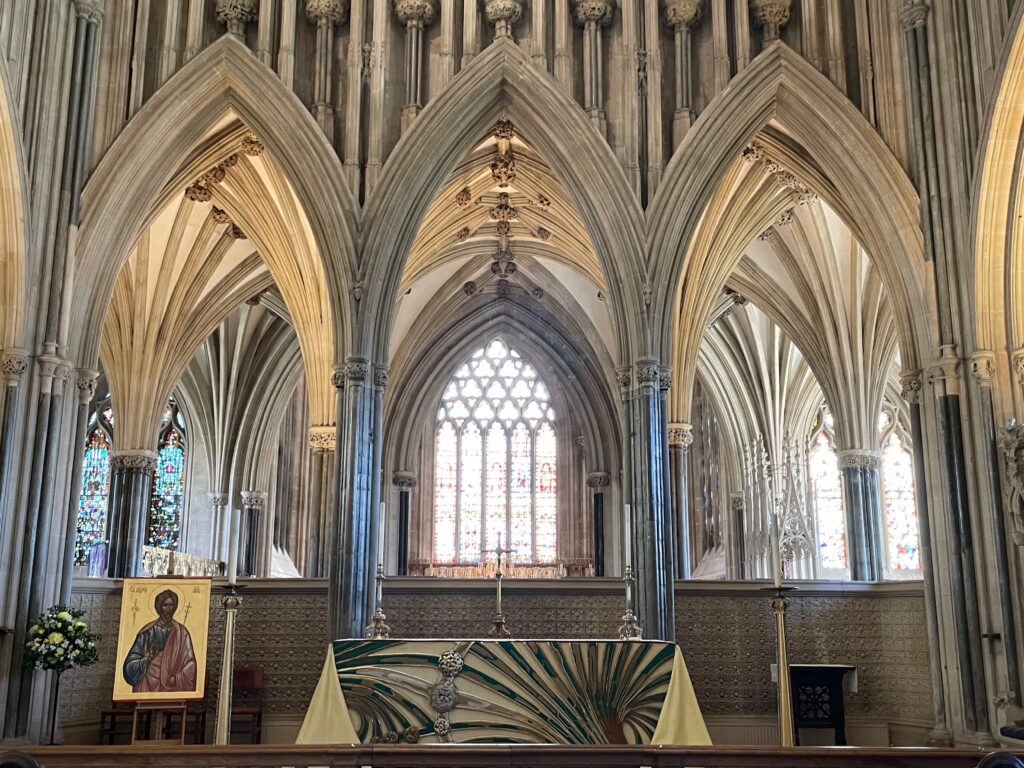
The organ stands between the two areas. The photo below is looking back towards the nave.
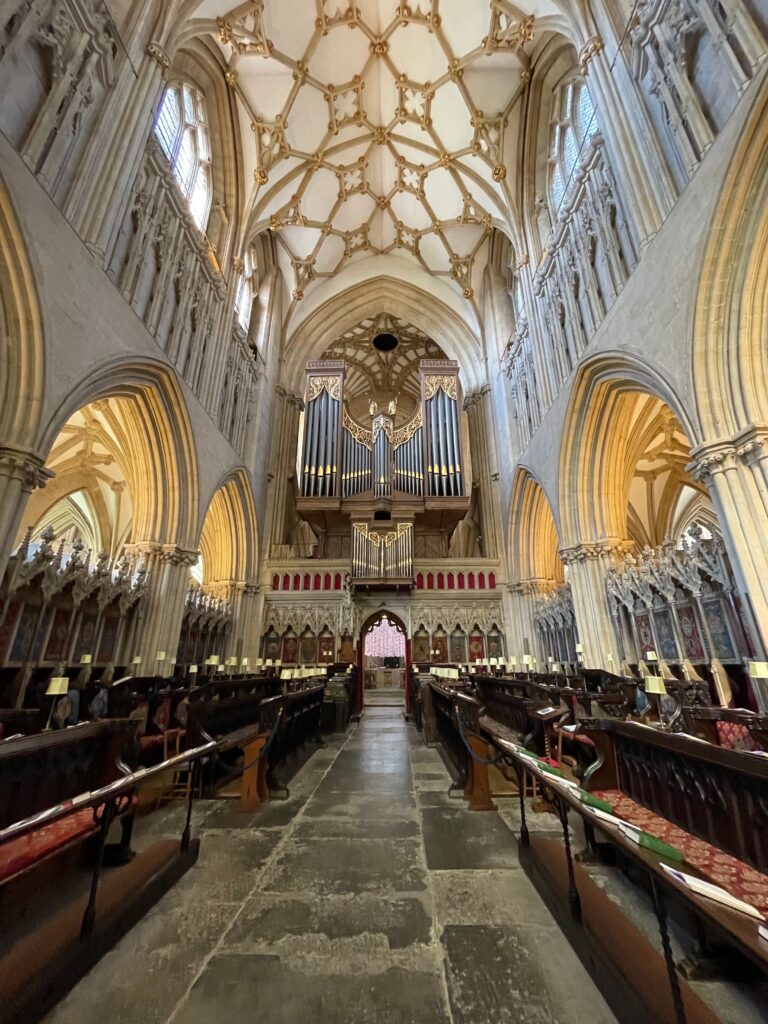
This Cope Chest was made in 1120 to hold the vestments of the clergy and is still in use today.
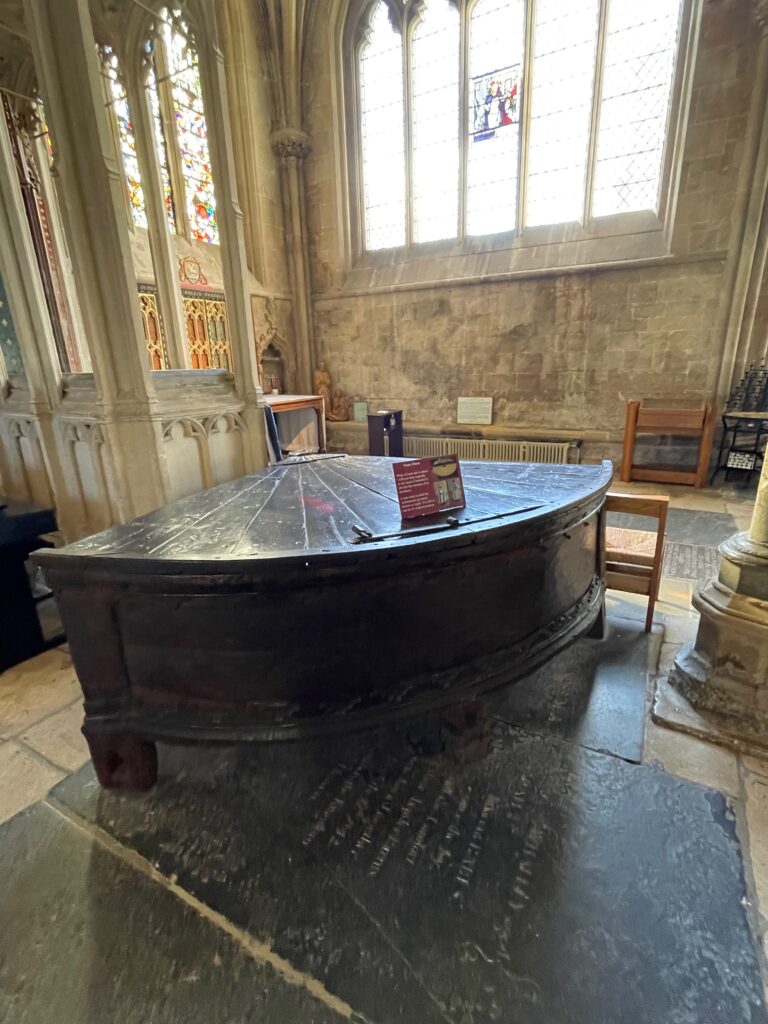
In the crypt, I found this wonderful medieval door dated back to 1265, although the ironwork may be later.
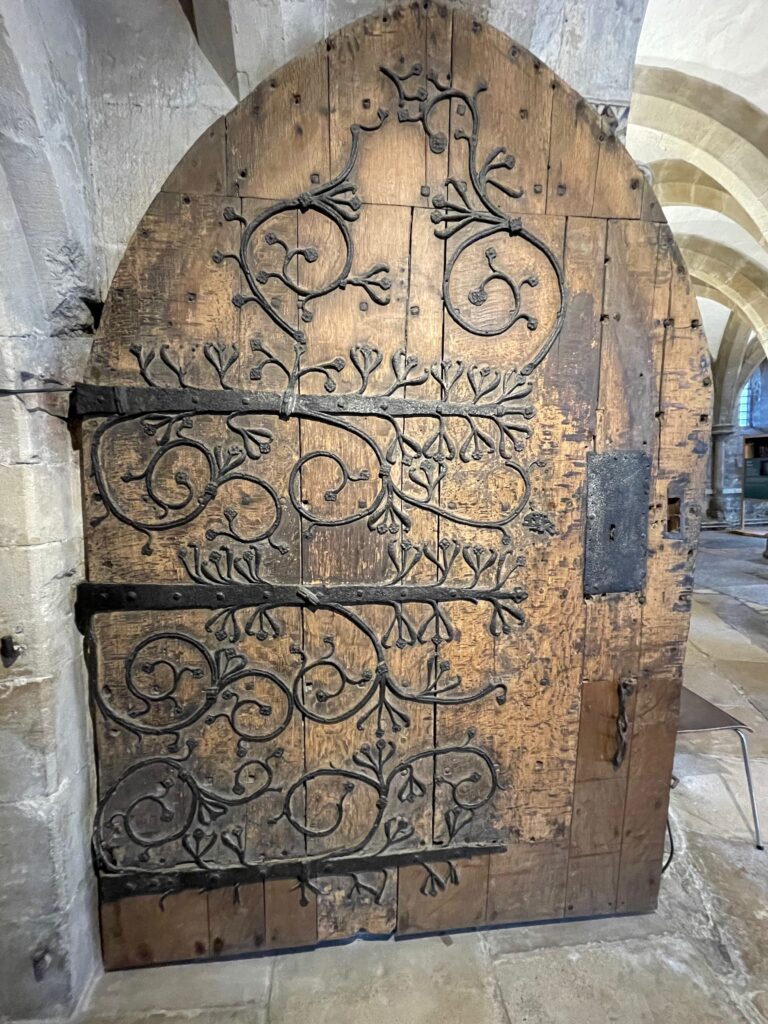
The octagonal Chapter House, with its beautiful fan vaulting, is accessed by a picturesque staircase, which is also worn and slippery, so hold onto the railing!
The cathedral’s library contains a rare chain library, where books are attached to shelves with chains to prevent theft, a common practice in medieval times. I wasn’t able to visit as it was closed at the time.
Outside in the small cloister garden, the cathedral had a set of rainbow wings for that perfect Instagrammable moment! I couldn’t resist.

There’s a small graveyard in the garden outside, which provides a quiet place in the sun — depending on the weather!
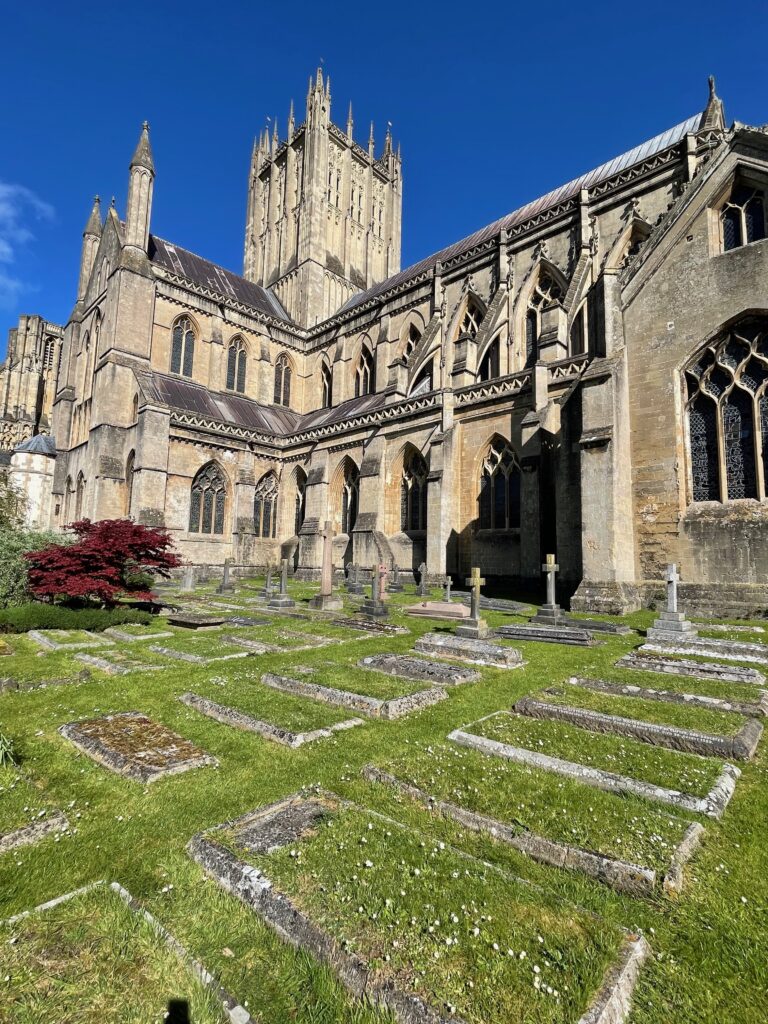
A statue of Jesus, barefoot and contemplative, looks up at the cathedral.

There is a cafe upstairs where you can have coffee and cake, and a gift shop.
Adjacent to the cathedral is the Bishops Palace, a moated medieval palace that has been the residence of the Bishops of Bath and Wells for over 800 years. You can walk around the outside or get a coffee or an ice cream inside, or pay to enter the site itself.
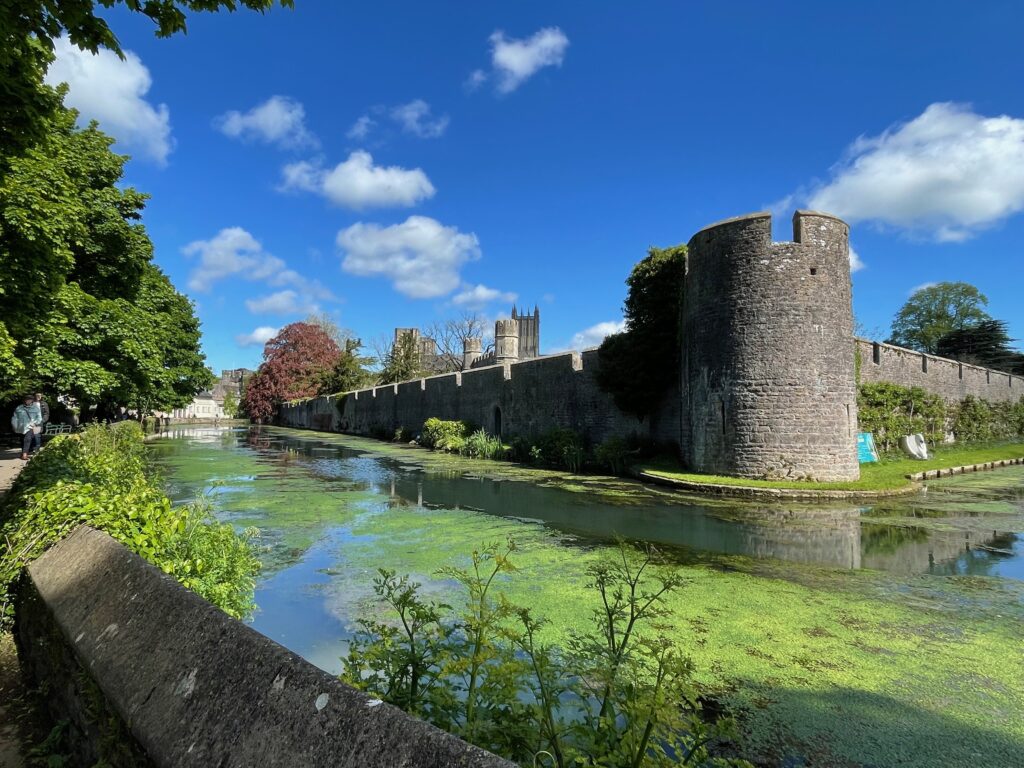
I hope this has given you a sense of how wonderful Wells Cathedral is. If you’re in the area, you might also enjoy Bath or Salisbury. Have a wonderful trip!

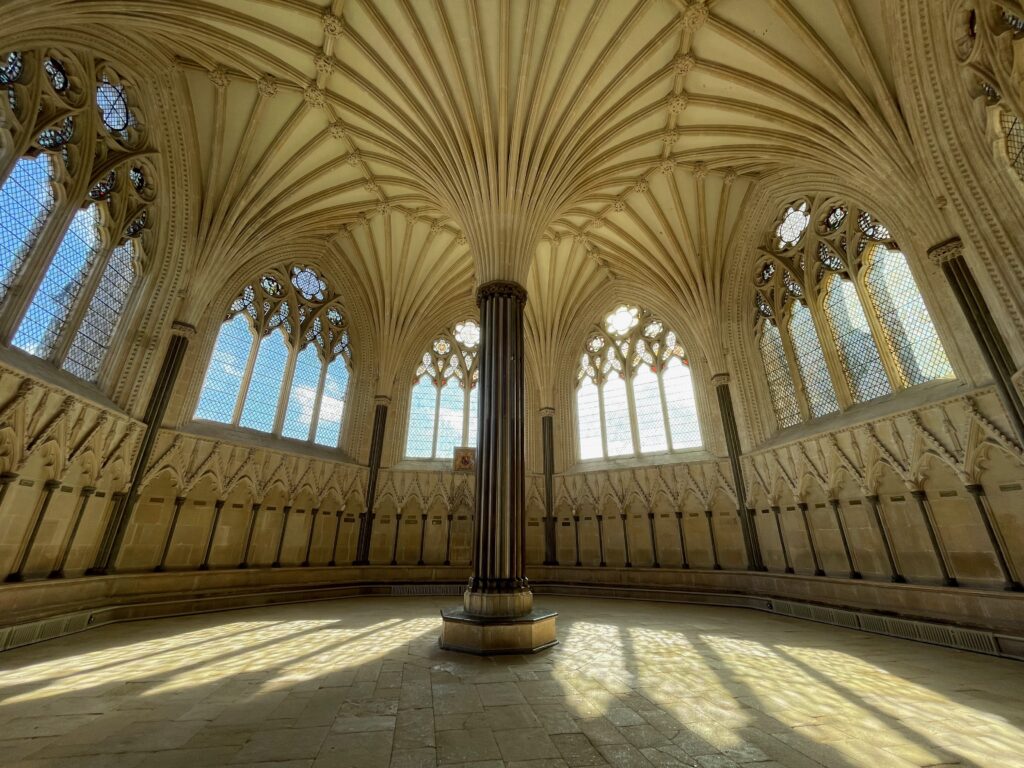
Joanna, is there any supposed interior similarities between Wells Cathedral and Glastonbury Cathedral? I know one was rebuilt after its fire about the time of Wells and then torn down after the dissolution of the monasteries.
Great pics, keep up the good work.
Glastonbury is older (7th century) and after the fire was rebuilt in Romanesque style but later fell into ruin after Dissolution. It did have some Gothic elements. Wells was built later (12th – 14th century) and is early Gothic, with the scissor arches added for support of the tower. Wells is the seat of the Bishop of Bath and Wells and continued as a place of worship after Dissolution, so it survived. The area had a lot more money for upkeep as well.
Wow! What an amazing cathedral I had never heard of. Bill Brown